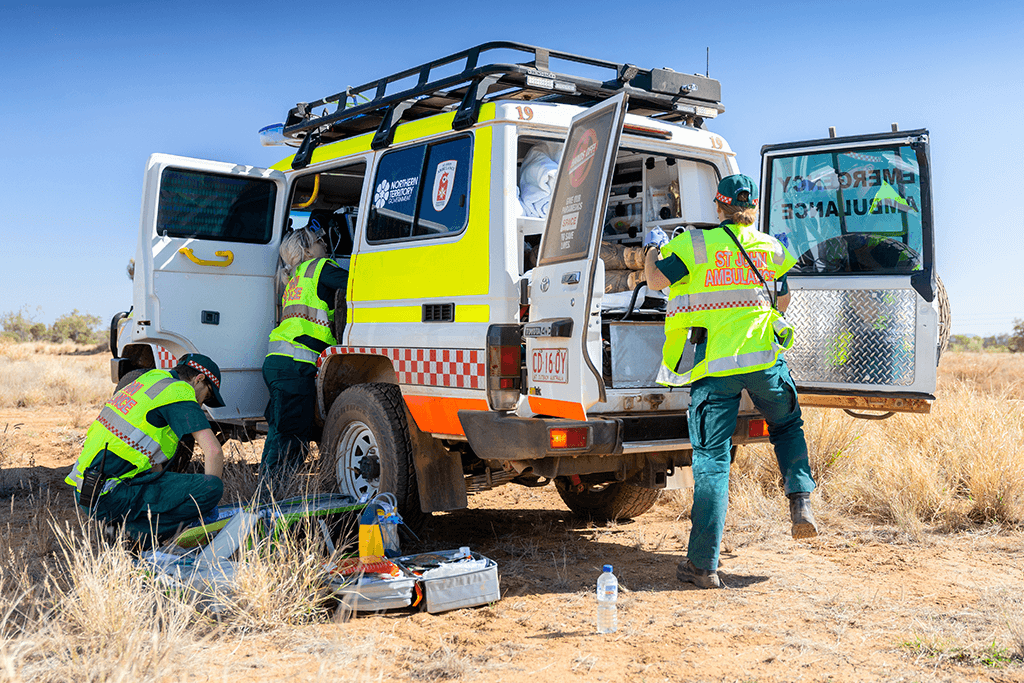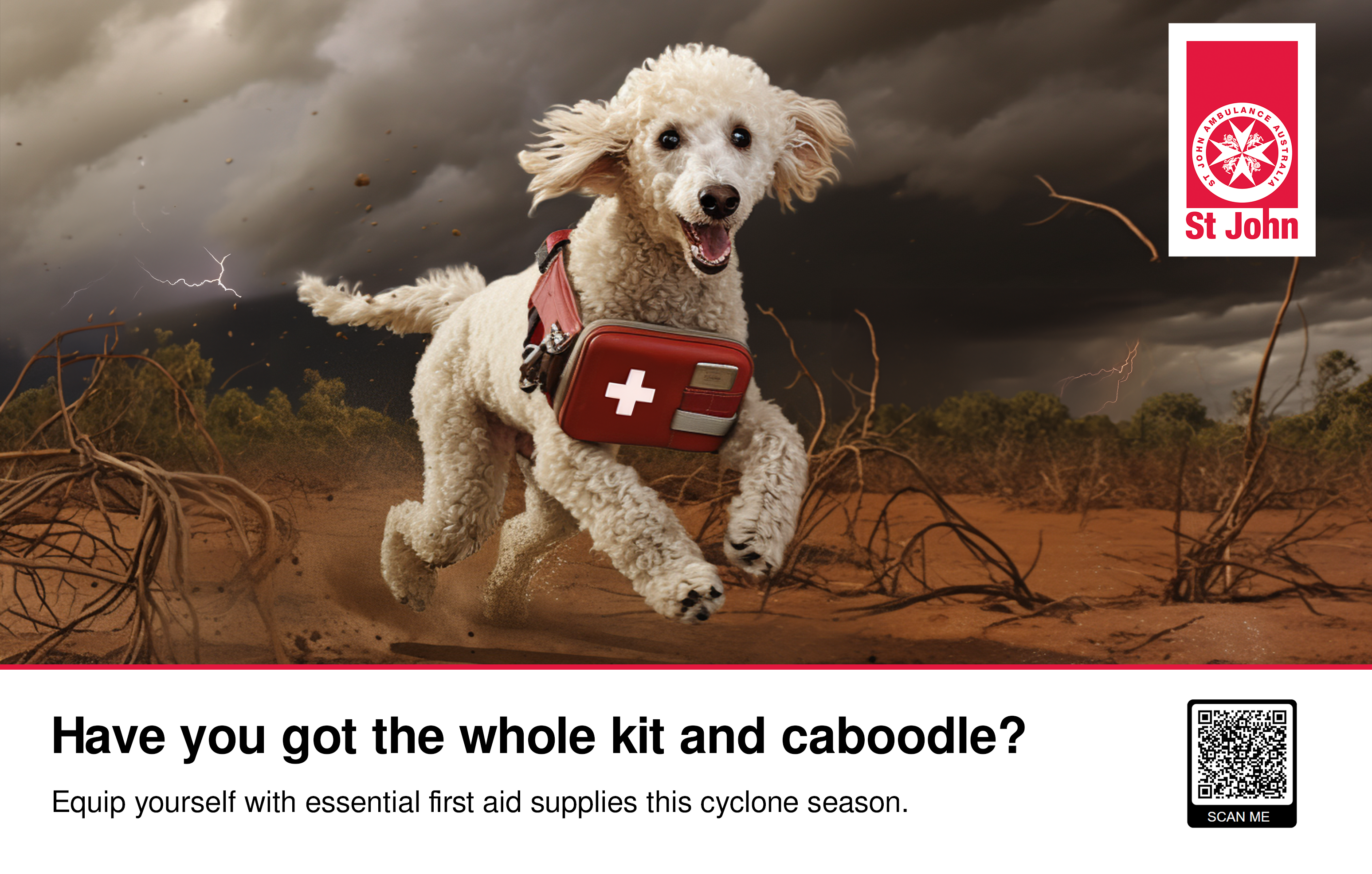ST JOHN NT
NEWSROOM
Stay up-to-date with what’s happening around our organisation, and drop us a line if you want to contribute!
For all media enquiries please contact media@stjohnnt.asn.au

Stay up-to-date with what’s happening around our organisation, and drop us a line if you want to contribute!
For all media enquiries please contact media@stjohnnt.asn.au


As residents of the beautiful and often unpredictable Northern Territory, we are no strangers to the power of tropical cyclones and severe weather. One crucial aspect of preparation is having a well-stocked cyclone kit tailored to the challenges posed by cyclones. Sometimes, handy items can be easily overlooked, especially if you leave it to the last minute. Ensuring you or your family’s safety during and after a cyclone means being equipped with the right tools for any situation. Here are eight things your cyclone kits needs:
1. Basic First Aid Supplies:
Begin with the basics - adhesive bandages, sterile gauze, antiseptic wipes, and adhesive tape. These are indispensable for treating minor cuts, scrapes, and burns and are usually included in our ST John NT first-aid kits. Include a pair of scissors and tweezers for precise wound care.
2. Medications and Prescriptions:
If you or your family members require prescription medications, ensure you have an adequate supply to last through the cyclone period. Any necessary prescription medications should be securely stored and don’t forget to include medication for allergies and other chronic conditions.
3. Hygiene and Sanitation:
Maintaining hygiene can be paramount during and after a cyclone, especially if the water or power supply has been cut off for long periods of time. Pack hygiene essentials such as hand sanitizer, soap, wet wipes, and sanitary pads. Keep the toothbrush and toothpaste on-hand as well for any extended outages.
4. Insect Repellents:
Tropical cyclones can bring a surge in mosquito and insect activity after the storm has passed. Include insect repellents, anti-itch creams or lotions to relieve discomfort caused by insect bites while undertaking any post-cyclone clean up.
5. First Aid Manual and Emergency Contacts:
A first aid manual or booklet can be a lifesaver in emergencies, providing guidance on various medical situations. Keep a hard copy in your kit for quick reference. Alongside, maintain a list of emergency contact numbers, including SecureNT, Police, and family members.
6. Specialised Items:
Consider the unique needs of your family members. If you have infants, ensure you have adequate amounts of nappies, baby wipes, and formula. For individuals with chronic illnesses, ensure you have specialized medical supplies and equipment, such as insulin, oxygen tanks, or mobility aids.
7. Torch and Batteries:
It goes without saying, a torch and spare batteries should be an essential piece of your kit. Power outages are common during cyclones, and having a reliable light source is essential for safety and comfort.
8. Emotional Support and Comfort Items:
Emergencies can be stressful, especially for children. Include comfort items like favourite toys, blankets, or books to provide emotional support and a sense of normalcy.
While the weather is clear, take time to check over and prepare your kit to ensure items are within their expiration dates and replace any used or expired supplies promptly. Being proactive and assembling a comprehensive cyclone kit ensures you’re ready for any severe weather the Monsoon season can bring.
For advice on first aid kits and training contact St John NT on 1300 ST JOHN or visit www.stjohnnt.org.au.
Copyright © All rights reserved | St John Ambulance Australia (NT) Inc.